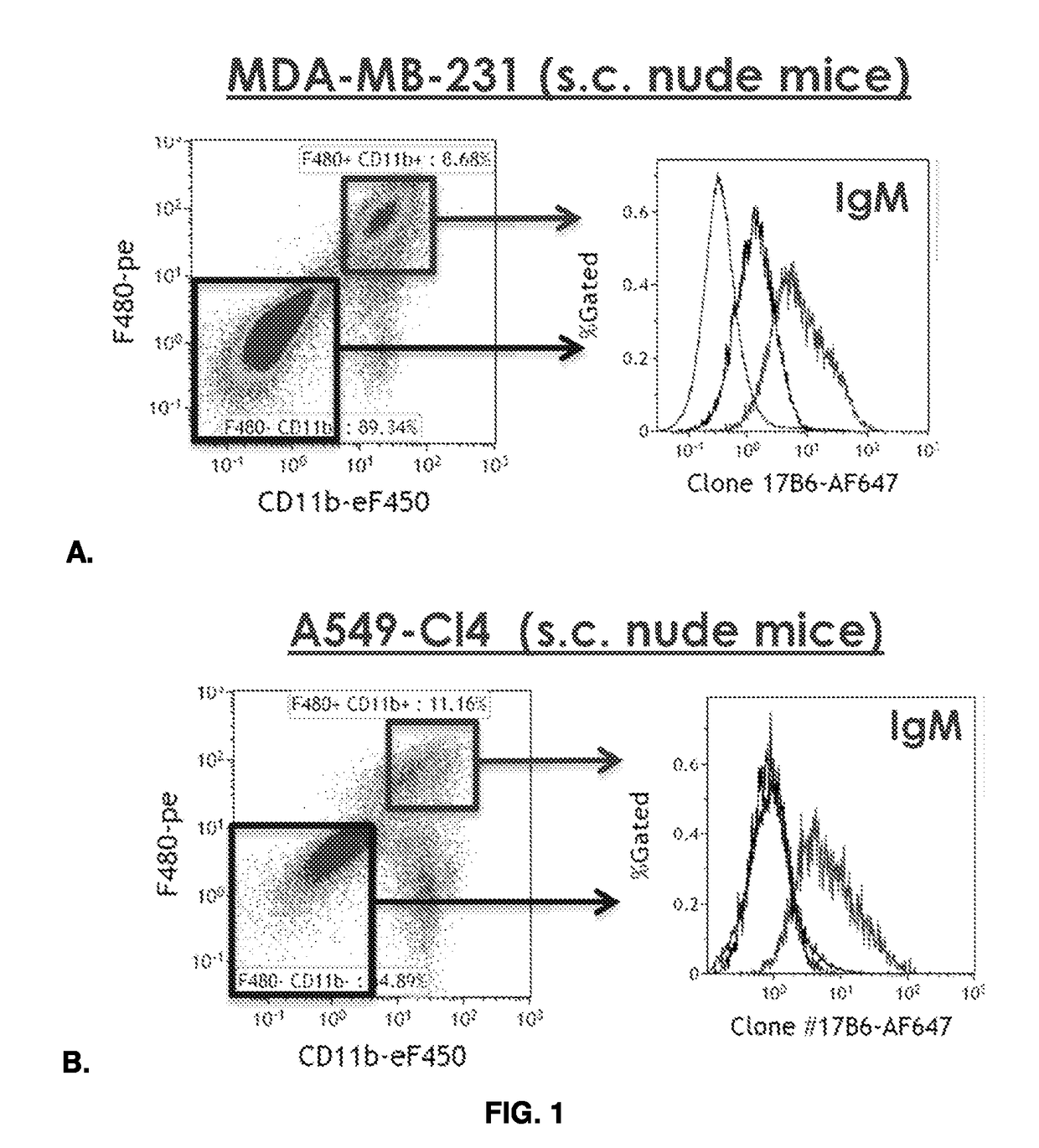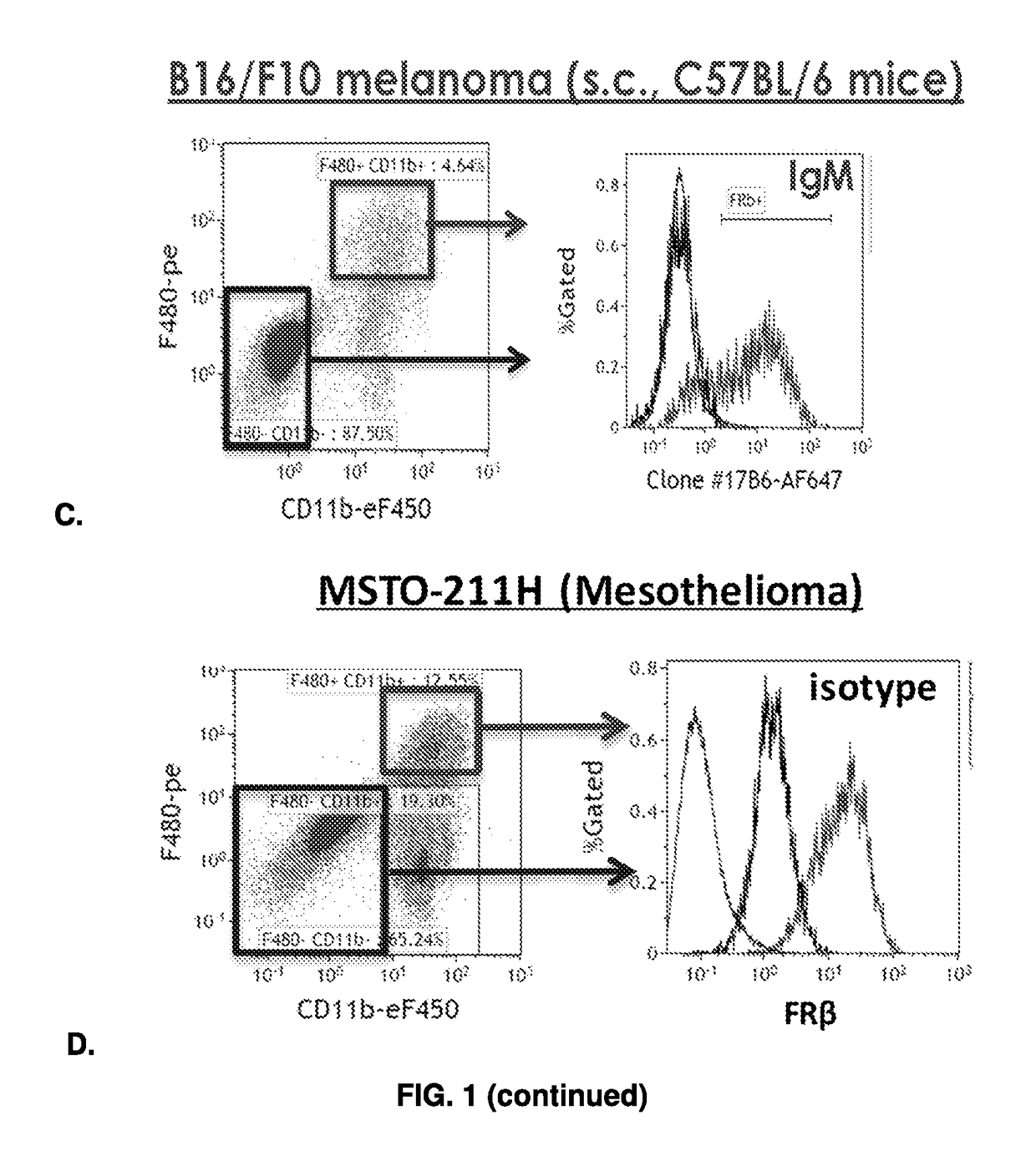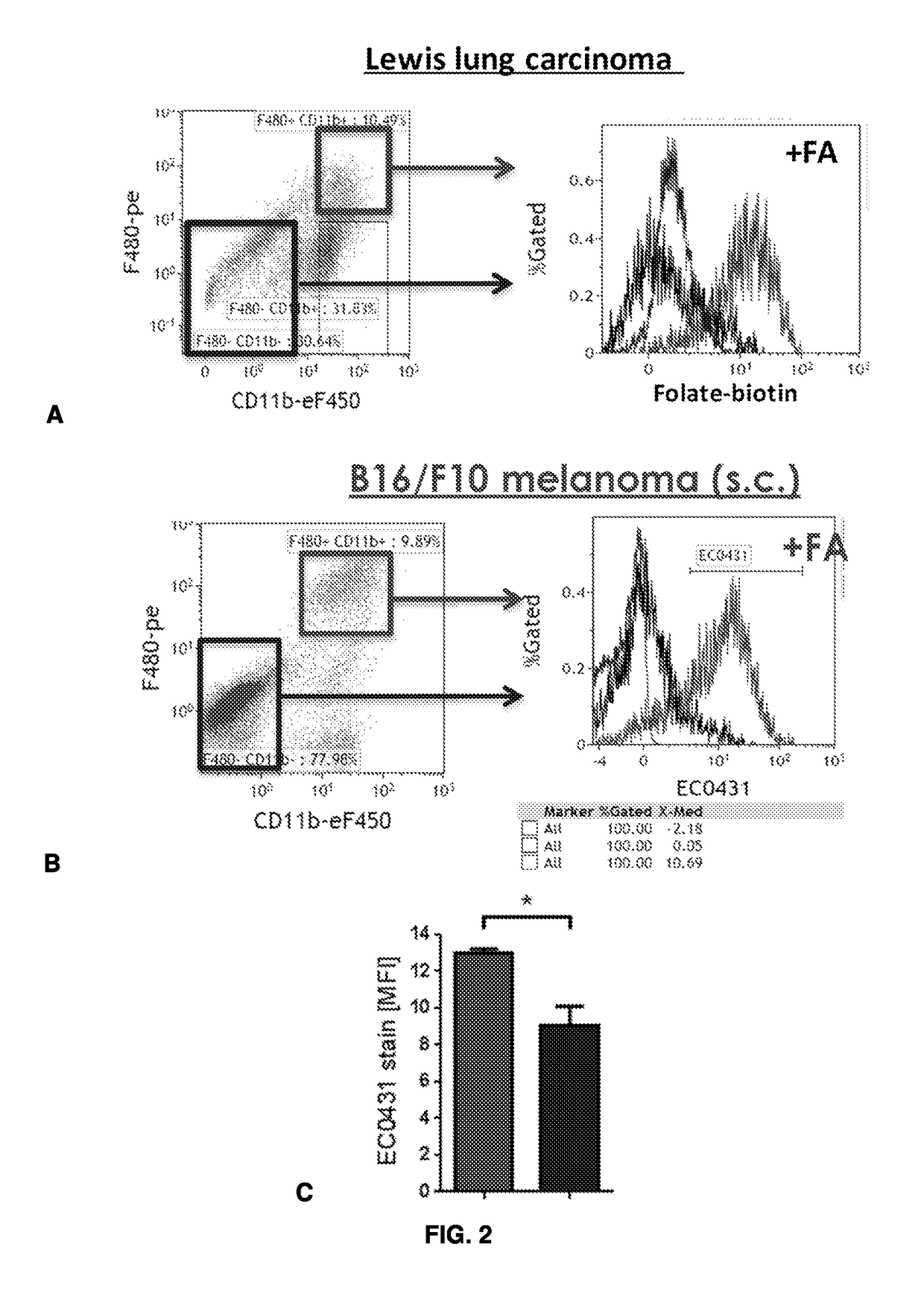Methods of treating cancer by targeting tumor-associated macrophages
- Summary
- Abstract
- Description
- Claims
- Application Information
AI Technical Summary
Benefits of technology
Problems solved by technology
Method used
Image
Examples
example 2
ysis of 4T1 Mammary Tumor Cells Post EC0486 Imaging
[0207]The 4T1 xenograft tumors harvested 2 h after EC0486 dosing in nude rats (FIG. 5) are subjected to FACS analysis after an enzymatic digestion step to generate single-cell suspensions. The tumor suspension cells are stained for macrophage markers (CD163 and CD11b) and analyzed on the same day. To compare functional FR levels, KB cells are stained with EC0486 and used as a positive control. In addition, an aliquot of the tumor suspension cells are stained ex-vivo with EC0486 to saturate any unoccupied FRs on TAMs.
[0208]Consistent with FR expression by TAMs, FACS analysis of 4T1 tumors excised from rats dosed intravenously with EC0486 exhibits specific fluorescent staining of the CD163(+) CD11b(+) TAM subpopulation (FIG. 6A). In contrast, negligible levels of cell-associated EC0486 fluorescence is detected in the CD163(−) CD11b(+) 4T1 TAM population and the FR(−) 4T1 tumor cells (FIG. 6A), which confirms folate targeting of fluoro...
example 3
of Example 1 Against 4T1 TAMs Ex-Vivo
[0209]Subcutaneous 4T1 mammary tumors are harvested from nude rats and enzymatically digested to generate single-cell suspensions. On the same day of harvest, whole tumor suspension cells are treated with 100 nM of Example 1, a folic acid-releasable linker-drug conjugate, with and without 100-fold excess of folic acid and the parent drug EC2078. Three days later, the tumor suspension cells are stained for macrophage markers (CD163 and / or CD11b), cell viability (propidium iodide), and late and early apoptosis (Annexin V).
[0210]Example 1 showed activity against FR(+) 4T1 TAMs ex-vivo. EC2078, the parent drug of Example 1, induces similar degrees of apoptosis in both TAM and non-TAM cell populations in 4T1 tumor cell suspensions (FIG. 8). However, Example 1 is only effective against the CD163(+)-CD11b(+) 4T1 TAMs (FIG. 8) that are previously shown to express a functional FR (FIG. 6A and FIG. 6B). The observed Example 1 activity is substantially bloc...
example 4.example 1
Example 4. Example 1 Activity Against 4T1 TAMs In-Vivo
[0211]As a proof-of-concept study, female Foxn1nu nude rats (Harlan, Inc., Indianapolis, Ind.) on a folate-deficient diet are subcutaneously implanted with 1×106 4 T1 tumor cells in the left and right mammary regions (2 tumors per animal). When the tumors reach about 900-1000 mm3, the animals are intravenously dosed with (i) PBS (n=1), (ii) 100 nmol / kg of the folic acid-releasable linker-drug conjugate, such as Example 1 (n=1), (iii) 100 nmol / kg of Example 1 plus 50 μmol / kg of EC0923 (n=1), or (iv) 50 μmol / kg of EC0923 (n=1). Four days later, the tumors are harvested, enzymatically digested, and subjected to FACS analysis. The tumor cell suspensions are stained for macrophage markers (CD163 and / or CD11b), cell viability (propidium iodide), and late and early apoptosis (Annexin V).
[0212]Example 1 demonstrates in-vivo selectivity for FR(+) 4T1 TAMs over FR(−) 4T1 tumor cells. With a single administration, Example 1 shows a signific...
PUM
| Property | Measurement | Unit |
|---|---|---|
| Covalent bond | aaaaa | aaaaa |
Abstract
Description
Claims
Application Information
 Login to View More
Login to View More - R&D
- Intellectual Property
- Life Sciences
- Materials
- Tech Scout
- Unparalleled Data Quality
- Higher Quality Content
- 60% Fewer Hallucinations
Browse by: Latest US Patents, China's latest patents, Technical Efficacy Thesaurus, Application Domain, Technology Topic, Popular Technical Reports.
© 2025 PatSnap. All rights reserved.Legal|Privacy policy|Modern Slavery Act Transparency Statement|Sitemap|About US| Contact US: help@patsnap.com



